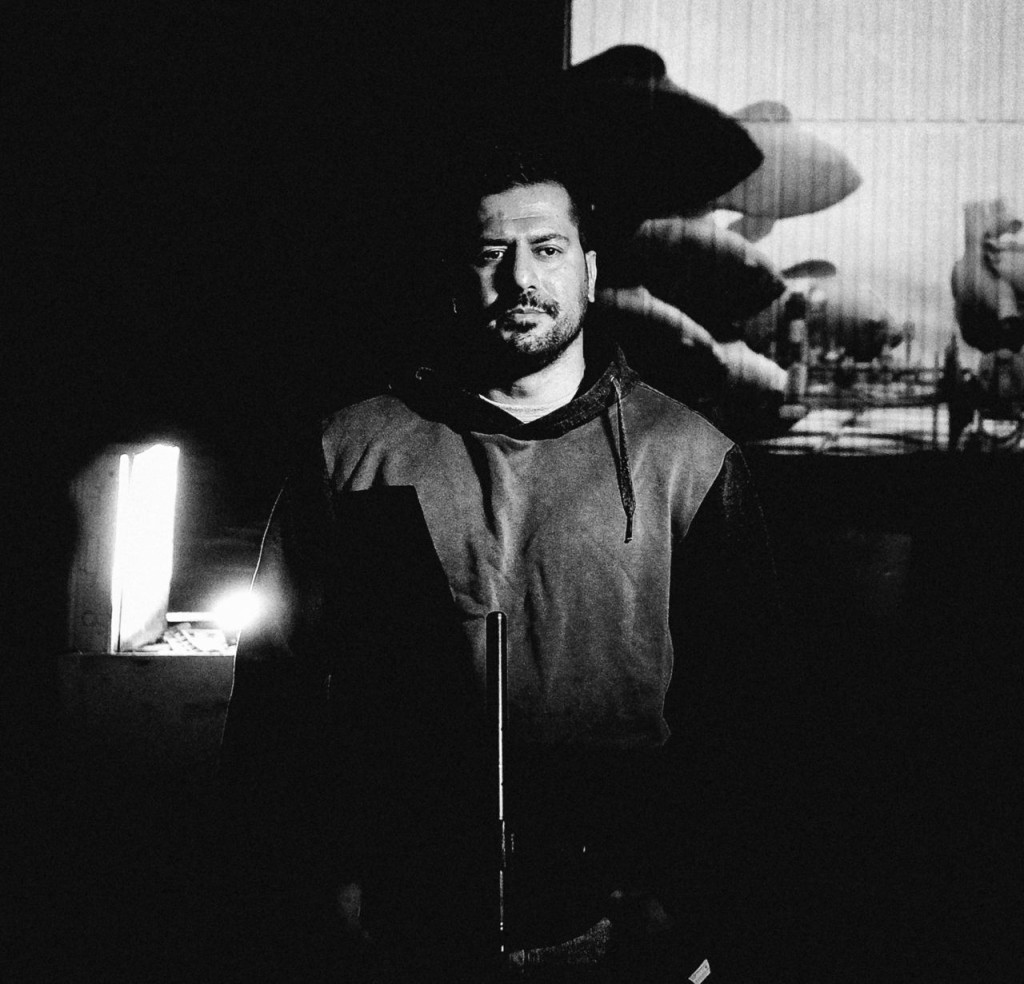Fusions too often prove superficial or homogenize traditional elements into an empty blur. Not so in the new outing from Behrouz Pashaei, who draws deep from the well of his exceptional traditional Iranian musicianship, interweaving it into a new, emotional electroacoustic direction on Encounter. Here, with a music video premiere:
Ata Ebtekar’s label Zabte Sote has become a gateway to other musicians bending the possibilities of music in Tehran. Here, it’s as though the electronics become just another Iranian instrument – and he pushes the form of the rock as much as he does the electroacoustic instruments. Encounter is moody and melancholy in turns, defiant in others, a dark, heartfelt adventure full of collaborations that open up other pathways. That’s to be expected from Behrouz, who joined label founder Sote as a Setar player on the ground-breaking Sacred Horror In Design, in addition to leading other band projects (Baad, Dast Saaz).
On this LP alone, Behrouz takes on electronics, acoustic and electric guitar, vocals, and Setar, while joined by some extraordinary musicians like Santour players Arash Bolouri and Masoud Abadi. The nuance and sophistication of Persian tune and rhythm are met with an equally experimental approach to rock and song structure, with electronics blending so richly into a dense homophony that you’d be forgiven for forgetting what’s electronic and what’s not.
We get a video premiere to go with this one – for “Chahar,” shot by the multi-talented Arash Bolouri, who contributed Santour to Sacred Horror In Design and Parallel Persia. Arash also works as a photographer and visual artist and has been a regular part of the visual imagination of Zabte Sote.
There’s just a lot to dive into here. “Yek” creaks and flows like a singing river with swaying trees. “Dow” moves in epic twists from delicate moments to heavy sweeps of sound. “Seh” dances in esoteric flurries and angular juxtapositions before the more intimate “Chahar.” “Panj” and “Shesh” are bold and explosive, like incantations. The fits and starts and angry bursts of “Haft” are a favorite, a spitting demon closing out the set.
What you won’t find at all in this set is any pastiche, any sense that a musical element is shallow or confined to stock forms or grid. Every detail of the full language of Iranian music is precisely applied to electronic sounds, and then pushed full-throttle at the ears in new and adventurous explorations.

In fact, if anything makes the argument for deconstructing the colonialist, imported grid of electronics, as I wrote earlier this week this absolutely does. (Don’t worry, Ableton Live kids – after you’ve worked through the Arabic lessons, there are Persian Radif lessons on Ableton’s tuning site, too! And great ones, too, by the amazing Idin Samimi Mofakham. Maqams, by the way, got their first major theoretical writeup in the work of Abd al-Qadir al-Maraghi ibn Ghaybi who was working in Herat – so modern-day Iran, even if the musical practice was deeply rooted in the Arabic world and early Jewish traditions.)
So yes, while Sami was talking Arabic music, not Persian, this further makes the arguments he was – and it’d be terrific to detail the parallel history in Persia and Iran. Refresher:
And previously in Sote on CDM:
https://zabtesote.bandcamp.com/
Photos by Arash Bolouri.